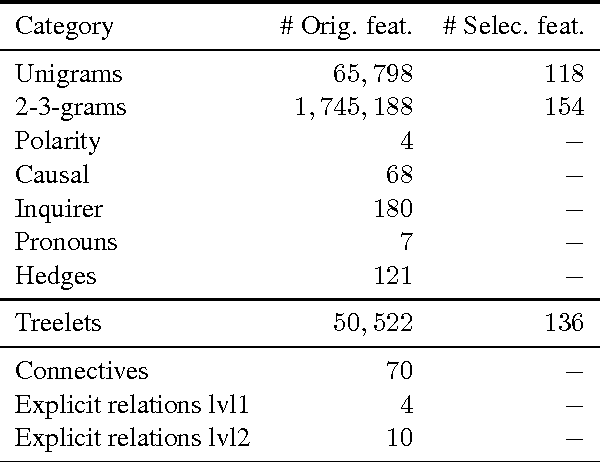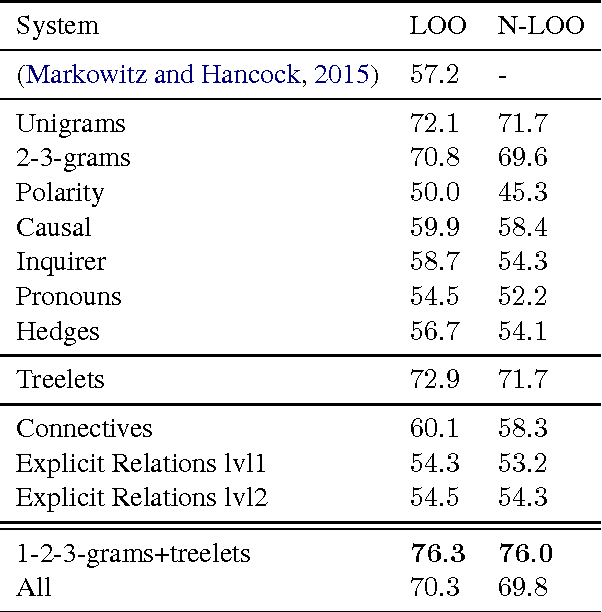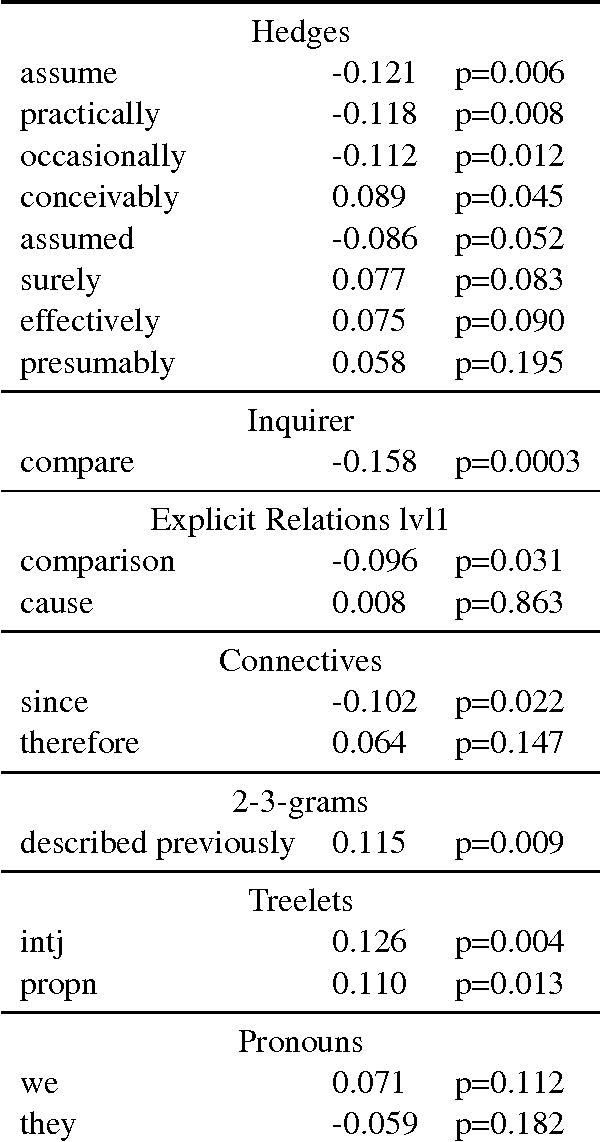Is writing style predictive of scientific fraud?
Paper and Code
Jul 13, 2017



The problem of detecting scientific fraud using machine learning was recently introduced, with initial, positive results from a model taking into account various general indicators. The results seem to suggest that writing style is predictive of scientific fraud. We revisit these initial experiments, and show that the leave-one-out testing procedure they used likely leads to a slight over-estimate of the predictability, but also that simple models can outperform their proposed model by some margin. We go on to explore more abstract linguistic features, such as linguistic complexity and discourse structure, only to obtain negative results. Upon analyzing our models, we do see some interesting patterns, though: Scientific fraud, for examples, contains less comparison, as well as different types of hedging and ways of presenting logical reasoning.
 Add to Chrome
Add to Chrome Add to Firefox
Add to Firefox Add to Edge
Add to Edge